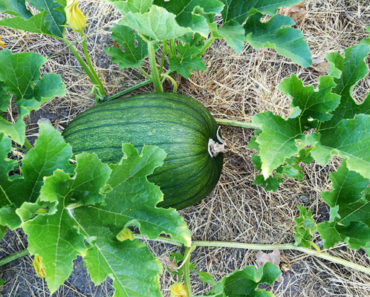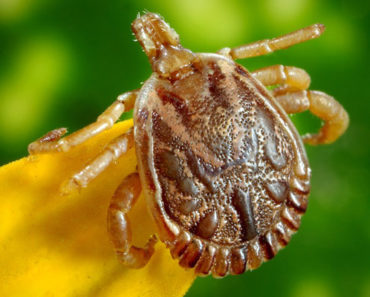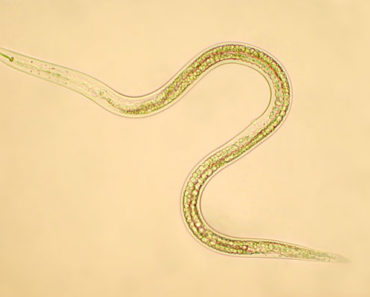The summer months are great for outdoor activities but often the mosquitoes can spoil a great day out. You either have the choice of being bitten and dealing with itchy welts, or slathering on some sort of insect repellent that is greasy, smells bad, and may leave a worse rash than the mosquitoes do.
Mosquitoes love hanging out in certain types of gardens, particularly where there may be a river or other water features. They enjoy the dampness. But it’s possible to thwart them. There are many mosquito repellent plants that you can grow in your garden. You can border your entire home, and the mosquitoes will choose to move into your neighbors yard instead.
Here are 6 of the best mosquito repellent plants for your garden, so you can resume your pleasurable outdoor activities without being bitten alive.
1. Why Citronella Grass is Effective Against Mosquitoes
Citronella grass grows in bunches and is from the Cardiopteridaceae family. It has long green pointed leaves, and can have many benefits in the garden, including repelling mosquitoes.
- Its lemon scent helps to keep away mosquitoes as they don’t like it.
- Its pleasant lemon scent is also perfect for providing a nice smell to the garden.
- A compound found within the plant is what repels the insects, rather than the grass itself.
- Citronella oil is extracted from this plant and is used as an insect repellent.
- Citronella is often an ingredient used in citronella candles, which are used outdoors to repel mosquitoes.
- There are other plants called Citronella to add to the confusion: a geranium and a tree. Citronella is in reference to the compound.
Growing Tips for Citronella Grass
Utilize these growing tips in the garden, so that your citronella grass grows well.
- There are different types of citronella, so choose either Cymbopogon nardus or Citronella winterianus for the most effective mosquito repellent properties.
- Cymbopogon is also called lemongrass.
- Citronella cannot withstand frost so if you live in colder climates, you may wish to grow it in large planters.
- Citronella needs to be pruned in the later winter or early spring.
- Use pruning to reshape your plant to the size that works in your garden.
- Pruning citronella grass is particularly important, as it’s often used as an ornamental grass near walkways.
- Remove any yellowing leaves throughout the year.
- Wear gloves when pruning, as the citronella oil may irritate your skin.
2. Why Catmint is Effective in the Garden
Catmint also has a natural fragrance that is pleasant to humans, but not to mosquitoes. Tiny flowers grow in bunches on a stalk, and are usually pale pink and white, blue, or purple, with silvery coloured foliage. Catmint is the genus of plants in the Lamiaceae family and there are over 250 species.
- Catmint provides a wonderful scent throughout your garden.
- Place them near your seating area or a doorway.
- Catmint is from the mint family.
- Scientists have discovered that it’s ten times more effective at repelling mosquitoes than the DEET insecticide.
- Honeybees and hummingbirds are natural pollinators and love the catmint family.
Growing Tips for Catmint
Catmint is easy to grow so it is a great choice for a garden. Catmint is easy to look after.
- Catmint can grow quickly so it’s important to trim at regular intervals during warm seasons, as it can quickly take over the garden.
- It will do well during a dry hot summer.
- After the first bloom of the season trim off the dead flowers and leaves to encourage another round of flowers.
- Keep the soil well-drained.
3. The Many Benefits of Rosemary in the Garden
Rosemary is an evergreen shrub that is in the mint family, and is also used as an herb in the kitchen. It’s popular in Europe and North America. Not only does rosemary smell good, it has multiple purposes in the garden. It grows in small bunches on the ground, with long stalks that each have dozens of small leaves on them.
- Rosemary is an herb that can also be consumed.
- It has a fresh woody scent to repel mosquitoes and to scent the garden.
- Rosemary looks great in the garden.
Growing Tips for Rosemary
Rosemary doesn’t grow well in all locations, so it’s best to read the directions first before deciding on container or ground planting.
- Rosemary grows the best in hot and dry climates.
- Rosemary can be grown in most other parts of the world in containers.
- Rosemary can also be grown indoors.
- Rosemary can actually be pruned for specific garden decorations or borders.
- After your rosemary has flowered, give it a good trimming.
- Trim your plant regularly so it doesn’t wilt.
- Bring outdoor containers indoors during the winter to ensure that you have a fresh supply of rosemary at hand year round.
- Water your rosemary plants regularly throughout the growing season.
- Rosemary cuttings do well for transplantation into new containers.
4. Why Basil Can Keep the Insects Away
Basil has large medium-green leaves and also smells fresh and fragrant in the garden. It’s one of the most popular herbs, earning the nicknames, “the king of herbs” and the “royal herb”. Its official name is Ocimum basilicum.
- Basil is an herb that has many purposes in the garden.
- Basil can be decorative, consumed, and used for keeping away both flies and mosquitoes.
- There are many types of basil, but they are all effective as mosquito repellents.
Growing Tips for Basil
Basil needs a bit of extra care for growing success.
- It can be grown in the ground of most sunny regions.
- Basil can be started from seeds or grown from a plant clipping.
- It must be kept damp and needs good drainage.
- Basil will need to be regularly watered during the hot months.
- It should be planted in areas of the garden that face the most sun.
- Basil also does well in containers too.
- Be sure to fertilize the soil under your plant about once a month if you’re growing it in containers indoors.
- Prune your basil plant regularly.
5. Keep Away Mosquitoes and Scent a Garden with Lavender
Lavender is one of the most delicious smelling flowering plants, but apparently mosquitoes don’t think so. It’s been used in perfumes, for garden decoration and in human medicine since ancient times. Its official name is Lavandula.
- Lavender has mauve or purple flowers that grown on the end of a long green stalk.
- There are many different varieties.
- Lavender has a lovely fragrance which is often made into essential oils.
Growing Tips for Lavender
Lavender needs some tender care to get started, but once it establishes itself, it turns hardy.
- Lavender is a tough plant, a lot like a weed.
- Lavender is drought-resistant so will do well in hot dry climates.
- It needs plenty of sun. Lavender does best in warmer climates and outdoors.
- If you have a specific region of the garden that gets a lot of direct sunlight, plant your lavender plants there.
- Ensure that there is a lot of drainage in the soil or at the bottom of the container.
- Lavender also grows well in raised beds.
- You can begin your lavender plants in a greenhouse or in a windowsill, but eventually they should be moved outdoors.
- Lavender doesn’t need much fertilizer, so keep your fertilizer applications to a minimum.
- Lavender likes to be grown in a high alkaline soil.
6. Why Geraniums Will Keep Away the Mosquitoes
Geraniums have a unique smell that not every human likes, but the benefits are that mosquitoes don’t like them either. Geraniums have bright green leaves and flowering bunches of flowers in pink, white, and red. They are also called Pelargoniums and encompass about 200 different types of perennials.
- Some geraniums have a pleasant lemon scent.
- When a geranium blooms the flowers have a strong fragrance.
- Pelargonium citrosum is called the citronella plant, which is loosely related to Citronella grass through hybridization.
- Pelargonium citrosum is also known at the mosquito plant.
Growing Tips for Geraniums
Geraniums are one of the easiest of flowering plants to grow. They are extremely easy to grow in containers too.
- Geraniums are extremely fast growing.
- Geraniums prefer a dry climate but can do well in humidity too.
- Geraniums like a warm sunny spot.
- Geraniums should be covered up in the winter.
Other Types of Insects These 6 Plants Can Repel
Many of these plants also have the benefits of repelling other types of biting insects too, so your garden can remain happy and peaceful.
- Chiggers
- Horseflies
- Fleas
- Ticks
It’s not necessary to spray your garden with harmful insecticides to keep the mosquitoes away. You can plant any of these 6 mosquito repellent plants in your garden and outsmart the biting insects. The best plan is to avoid attracting them to your garden in the first place.
Once your mosquito repelling plants start growing, they’ll become even more effective at protecting your garden from annoying insects. Soon you’ll be able to lounge in your garden in comfort, without having to swat at insects, fight itchy skin welts, or wear sticky insect repellents.








